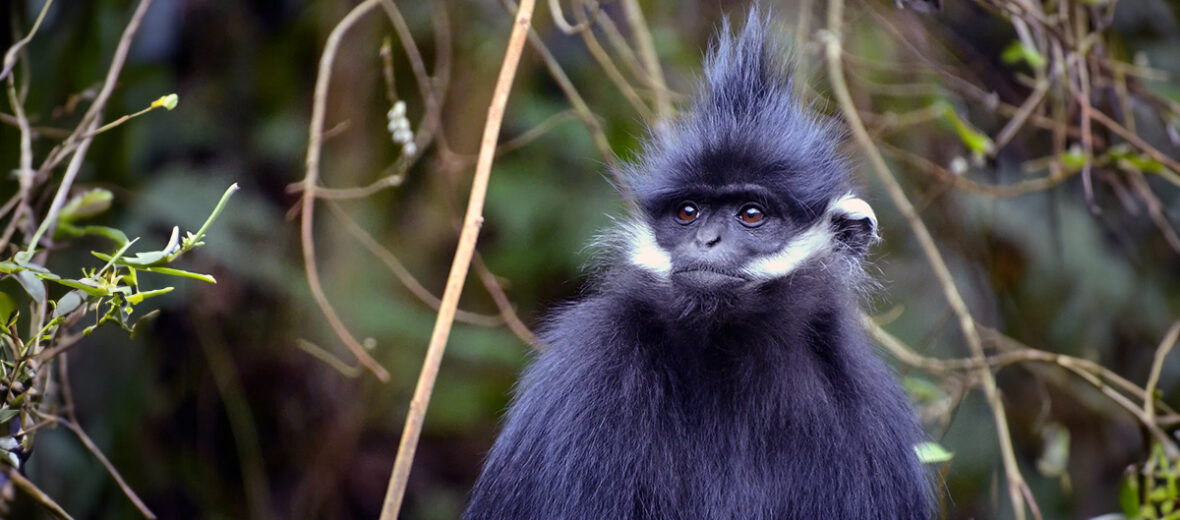
The François’ langur, aka Francois’ leaf monkey, Tonkin leaf monkey, or white side-burned black langur, hails from Southwestern China to northeastern Vietnam. They are among the least studied of the Colobinae (leaf-eating monkeys) subfamily. These cool-looking primates face the threats of deforestation from logging; habitat loss and destruction at the hands of mining and quarrying; hunting; trapping; fires, and fire suppression. The IUCN lists these primates as Endangered, and their populations are decreasing.
First the Stats…
Scientific name: Trachypithecus francoisi
Weight: Up to 13 lbs.
Length: Up to 25 inches, plus up to a 38 inch tail
Lifespan: Up to 25 years
Now on to the Facts!
1.) There were only an estimated 2,100 wild individuals remaining, as of 2015.
2.) They are named after Auguste François, who served as the French Consul at Lungchow in southern China.
3.) Due to their preference for leaves, they have evolved a complex 4-chambered stomach, like a cow.
4.) François’ langurs have large salivary glands to aid in the digestion of tough leaves.
5.) These critters are diurnal (active during the day).
But wait, there’s more on the François’ langur!
6.) They can be found in troops of up to 27 individuals, but up to 12 are more common.
7.) Troops are structured into a matriarchal society, where females lead the troop.
Did you know…?
While they spend up to 50% of their time on the ground, langurs can leap up to 15 feet horizontally and up to 40 feet while descending in trees!
8.) The single infant is born with bright orange fur, which eventually fades to black throughout their infancy lasting several months. It is hypothesized that this bright coloration brings about attention, caregiving, and protection by the adults.
9.) Alloparenting (shared parenting by the troop) is commonly practiced.
10.) Leaves, fruits, seeds, flowers, stems, roots, bark, and various minerals, and even the occasional insects are all on the menu.
But wait, there’s still more on the François’ langur!
11.) They prefer karst topography, limestone cliffs, and caves in tropical and subtropical habitats.
12.) Loud calls are emitted to denote territorial boundaries.
13.) Leopards, tigers, dholes, and eagles all prey on these critters. However, humans are their biggest threat.
Now a Short François’ Langur Video!
Be sure to share & comment below! Also, check out the Critter Science YouTube channel. Videos added regularly!
Want to suggest a critter for me to write about? Let me know here.
Some source material acquired from: Wikipedia & IUCN
Photo credit: Niu Kefeng




Leave a Reply